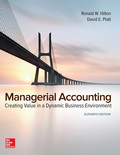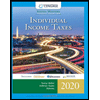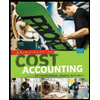
1 a.
Explain how breakeven point in units is calculated by using the contribution margin approach.
1 a.
Explanation of Solution
Break-even Point: It refers to a point in the level of operations at which a company experiences its revenues generated is equal to its costs incurred. Thus, when a company reaches at its break-even point, it reports neither an income nor a loss from operations.
Contribution Margin: The process or theory which is used to judge the benefit given by each unit of the goods produced is called as contribution margin. The contribution margin is the difference between the selling price and the cost of the product.
By using the contribution margin approach, the breakeven point in units is calculated as below:
1 b.
Explain how breakeven point in units is calculated by using the equation approach.
1 b.
Explanation of Solution
Equation approach: Equation approach is an alternative way to find out the breakeven point. It is based on the profit equation.
By using the equation approach, the breakeven point in units (sales volume in units) is calculated as below:
3.
Explain how breakeven point in units is determined by using the graphical approach.
3.
Explanation of Solution
Sales revenue and total expenses are graphed according to the graphical approach. The point of intersection of total revenue and total expenses is considered as the break -even point.
Want to see more full solutions like this?
Chapter 7 Solutions
Managerial Accounting: Creating Value in a Dynamic Business Environment
- I am searching for the accurate solution to this financial accounting problem with the right approach.arrow_forwardPlease provide the accurate answer to this financial accounting problem using valid techniques.arrow_forwardPlease provide the correct answer to this financial accounting problem using valid calculations.arrow_forward
- Please fill the empty cell in this problem. It is the only thing I need.arrow_forwardPlease explain the solution to this financial accounting problem with accurate principles.arrow_forwardWhat exactly are intangible assets and how are they defined? How are intangible assets different from plant assets?arrow_forward
- Answer this without using chatgtp or AIarrow_forwardNicole is a calendar-year taxpayer who accounts for her business using the cash method. On average, Nicole sends out bills for about $12,000 of her services on the first of each month. The bills are due by the end of the month, and typically 70 percent of the bills are paid on time and 98 percent are paid within 60 days. a. Suppose that Nicole is expecting a 2 percent reduction in her marginal tax rate next year. Ignoring the time value of money, estimate the tax savings for Nicole if she postpones mailing the December bills until January 1 of next year.arrow_forwardGeneral accountingarrow_forward
- Principles of Accounting Volume 2AccountingISBN:9781947172609Author:OpenStaxPublisher:OpenStax CollegePrinciples of Accounting Volume 1AccountingISBN:9781947172685Author:OpenStaxPublisher:OpenStax College
 Individual Income TaxesAccountingISBN:9780357109731Author:HoffmanPublisher:CENGAGE LEARNING - CONSIGNMENT
Individual Income TaxesAccountingISBN:9780357109731Author:HoffmanPublisher:CENGAGE LEARNING - CONSIGNMENT  Principles of Cost AccountingAccountingISBN:9781305087408Author:Edward J. Vanderbeck, Maria R. MitchellPublisher:Cengage Learning
Principles of Cost AccountingAccountingISBN:9781305087408Author:Edward J. Vanderbeck, Maria R. MitchellPublisher:Cengage Learning





